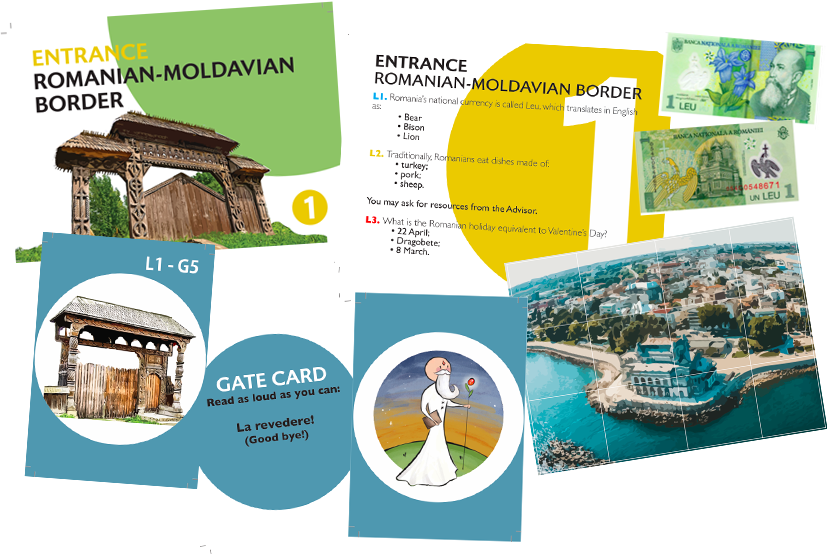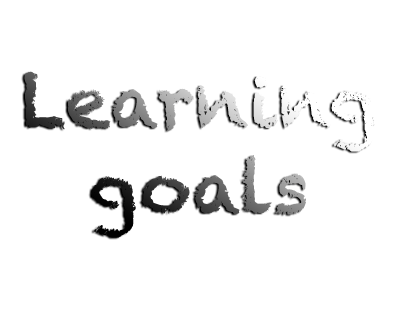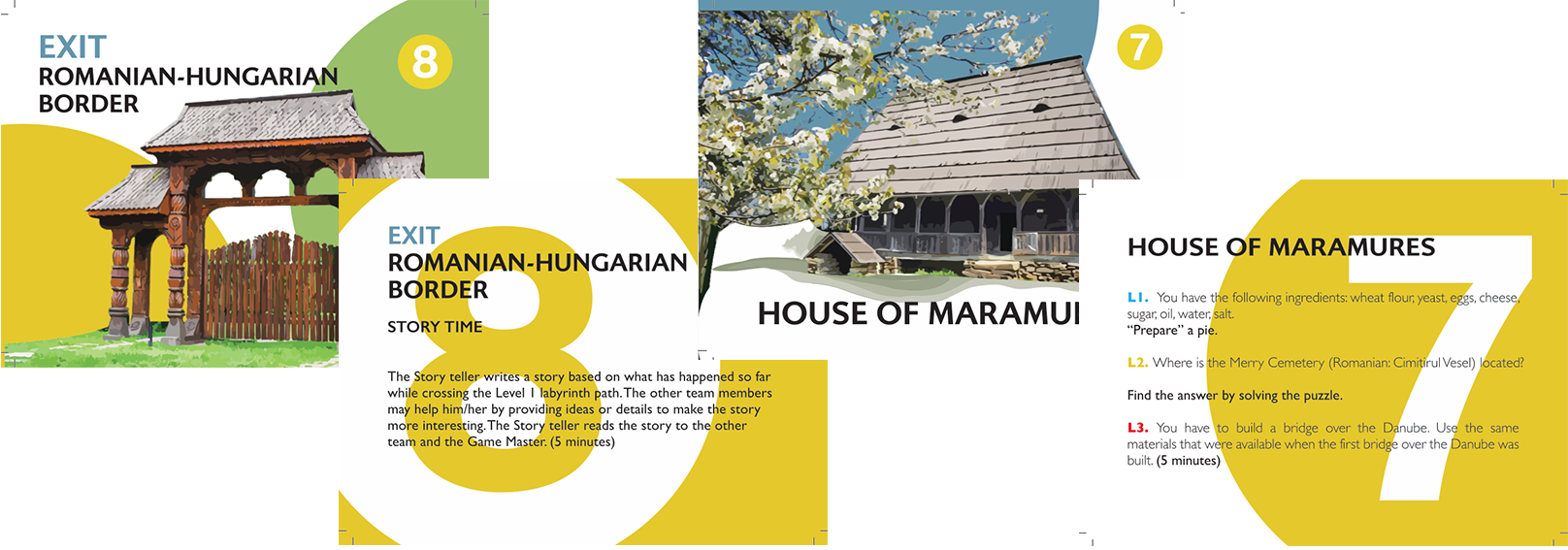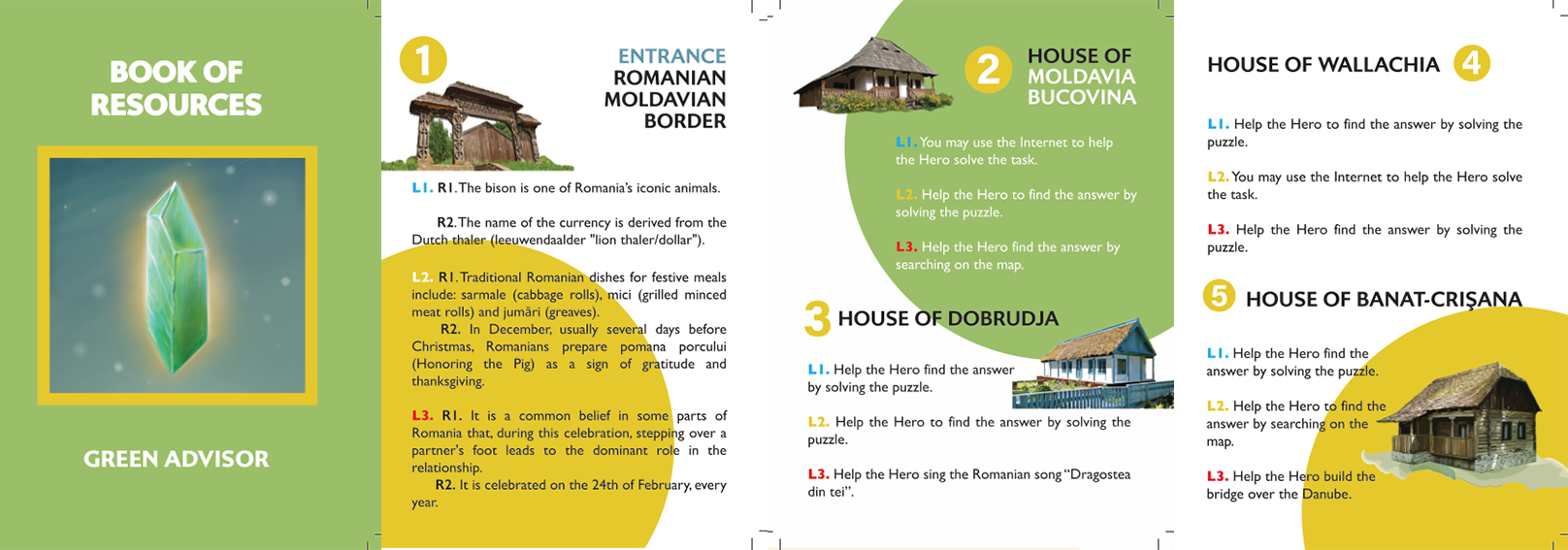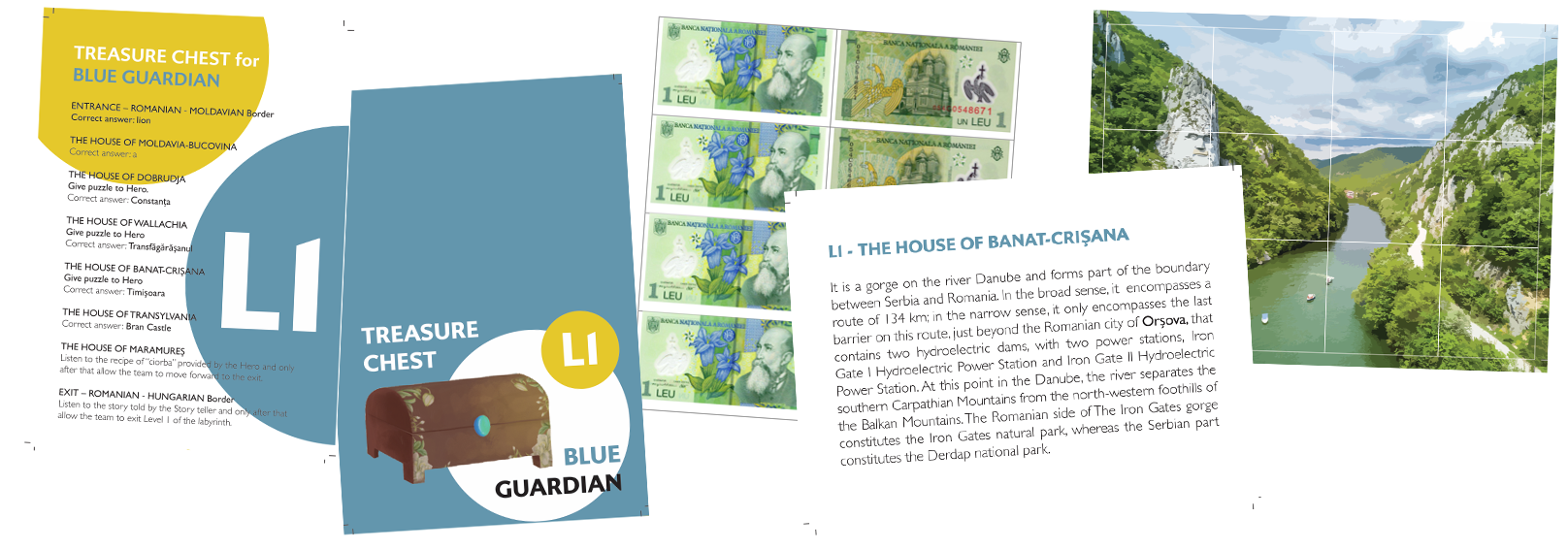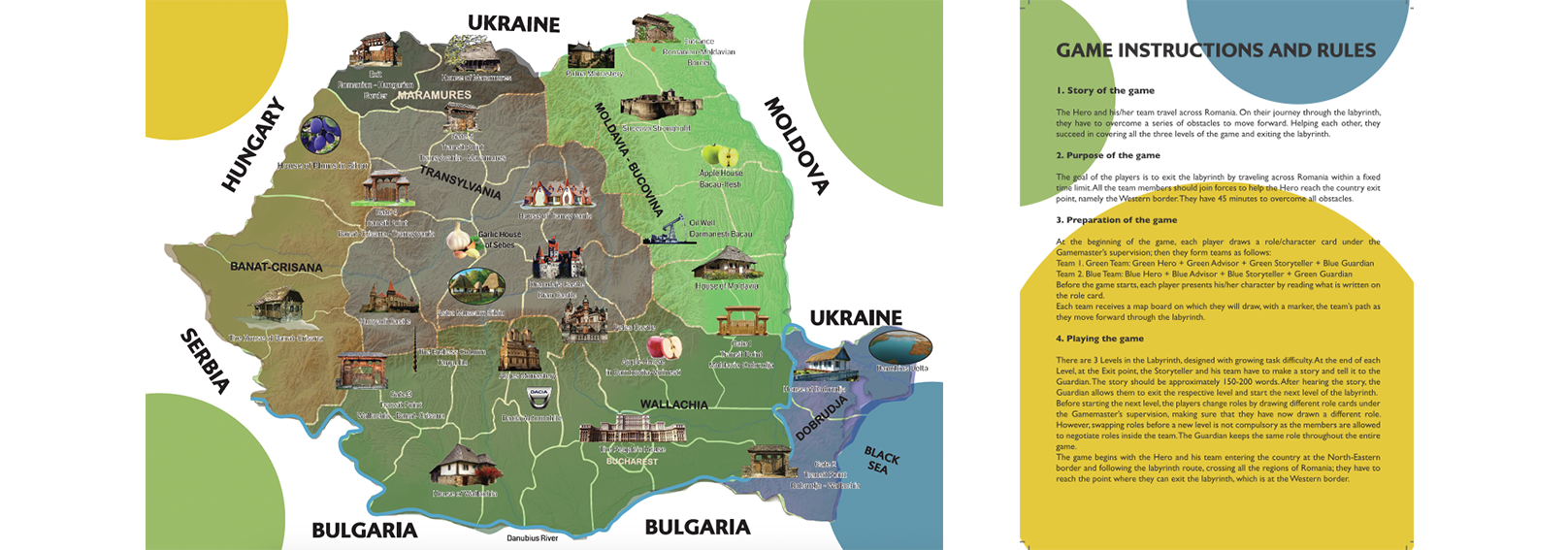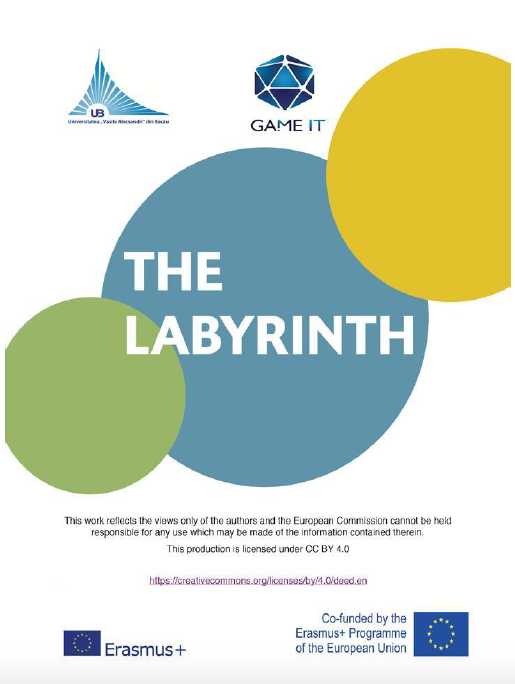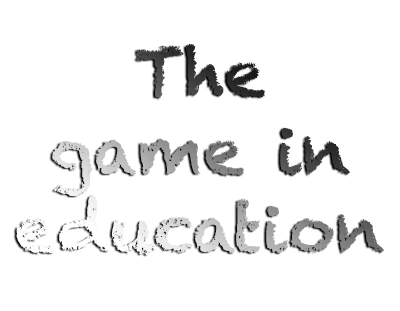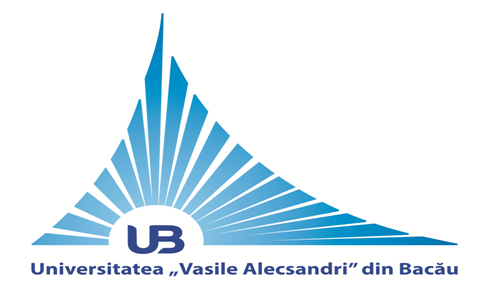Thus, as predicted by the fairy godmother, on the special day when the rainbow had only three colors, blue, yellow, and red, Hero went out the gates of the castle and headed northwards. He traveled for several days and, suddenly, one morning, as the mist rose, he found himself surrounded by some strange looking monuments that looked like tombstones, but were too colorful to be regarded as such. As he approached one of these monuments to take a closer look, a clocklike creature with long arms and legs, appeared from behind one of the monuments, stood in front of Hero, blocking his way, and said in a ding-dong voice:
- - Who is this stranger that has just trespassed the borders of my realm and set me running again after years and years of rusting away in my sleep? Hero, pretending not to be afraid, answered quickly:
- - I am sorry to have disturbed your sleep, sir …!
- - I am the Guardian, replied the clocklike creature authoritatively, and this is Săpânța, my country. Who are you and what are you doing here all by yourself?
- - I am Hero, son of the ruler of the stronghold of Bacău. I am traveling for pleasure and business: I must find Youth without Age and Life without Death.
- - Hahaha!, laughed the Guardian. There is no such thing, at least not for you, child, everybody knows it … But, once you are here, you must obey the rules of my country, that is, if you want to be free again, because, for now, you are my prisoner. So, whoever steps into my territory without a visa sets me running and has to bear the consequences.
- - Well then, what are the consequences?
- - If you want to be free again and have your chance of finding what you’re searching for, you must take this route that takes you into a labyrinth. There will be obstacles, but I cannot tell you of what kind and how to overcome them. I will accompany you, just to remind you that the clock is ticking and to make sure that there is no cheating going around … Also, I hold the keys to the truth that you shall need and I will help you when you will ask for my help. But remember, everything has a price! At that point, two more creatures appeared out of nowhere behind Hero’s back: one of them looked like an old ragged book and the other one like an antiquated pencil. Drawing closer, the book-like creature said to Hero:
- - I am your father’s Advisor, Hero. The Emperor has sent me to take care of you. And this is the imperial Storyteller, said the Advisor introducing the pencil-like creature. So far, we have kept ourselves at a distance, unseen. But now, looking at this creature here, I believe that you and we should travel together. We may help you with the guidance and recording of your travel. What do you say, my child? Hero looked around in amazement and stood silent for several moments; however, time was already ticking away and, as he now wanted to be free again, agreed to be accompanied by the Advisor, the Storyteller, and the Guardian. They took the Route indicated by the Guardian and crossed several countries. Upon entering each new realm, Hero had to figure out passwords to be allowed to move forward and the Advisor would help when necessary; from time to time, when having a rest, the Storyteller would tell a story about their whereabouts.
- - Dear father, I have crossed many countries and seen and learned many things. I will rule the country from now on, together with the team standing here today with me: the Advisor, the Storyteller, and the Guardian; they will be my councilors. Traveling together with them has made me realize that Youth without Age and Life without Death means making wise decisions to benefit oneself and others and only by working as a team will we be able to do this. The Emperor agreed, happy to see Hero back, older but stronger and wiser. There were elections organized, and Hero, together with the team of councilors, were elected to rule the country.
Eventually, upon exiting the labyrinth Route, Hero found himself standing in front of the gates of his father’s castle. Entering the castle, Hero found the Emperor ill and unable to rule the country anymore. Approaching humbly the throne where his father barely kept himself straight, Hero said:


